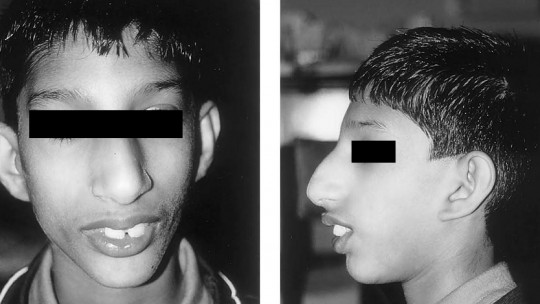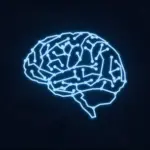Dysgraphia is one of the disorders whose effects are noticeable in the development of boys and girls from around the world, since it has to do with the difficulties when carrying out one of the most useful actions today: writing.
If this skill is not internalized well in childhood, this can lead to a much lower ability to communicate with other people, make lists and write to better organize day-to-day life, or apply for jobs with great added value. , among other negative consequences.
In this article we will see What characteristics, symptoms and causes are related to dysgraphia as well as the types of treatments recommended to mitigate its effects on childhood development.
What is dysgraphia?
The phenomenon by which a person (usually a boy or a girl) has serious difficulties in writing well, whether due to spelling, handwriting or both types of problems at the same time, is known as dysgraphia. These difficulties must cross the limit of what is considered pathological, through criteria taken into account by the professional who carries out the diagnosis.
It is, therefore, a group of disorders of written expression, which in turn can be included in the category of specific learning disorders
In turn, in practice dysgraphia is frequently accompanied by other specific learning disorders, such as dyscalculia or dyslexia. This is because brain alterations that affect one of these functions are usually caused by defects that reach the areas of the brain responsible for carrying out the others, given that they are close to each other, if not closely related.
The components of writing that can be affected by dysgraphia are varied, so the symptoms of this alteration are also varied. Among the most notable are the following, always taking into account the age range to which the person belongs.
It should be noted that dysgraphia can significantly limit the ability to learn, especially in educational institutions that are not prepared to meet the needs of boys and girls who have this alteration.
As a result of a frustrating and emotionally painful schooling, The mark left by this type of problem can become chronic and also affect adult life given the obstacles when it comes to receiving a formal education.
It must be remembered that school is both one of the main contexts for the socialization of children, as well as an access route to stable professional careers with the capacity to provide all the material resources necessary to live with dignity.
Types of dysgraphia
As we have seen, dysgraphia affects several aspects of the ability to write. However, beyond all these variations, Dysgraphia cases can be classified into two main types according to the characteristics of the writing difficulties.
Of course, as is the case in most cases with psychological disorders, normally the symptoms of each type do not present in a “pure” way. Therefore, it is common for them to partially overlap with each other, and for there to be some ambiguity about what type of dysgraphia a patient presents.
Dysorthography
It consists of the presence of significant problems in learning spelling rules in writing practice This can greatly complicate school progress, and if its effects remain significantly into adulthood, they also affect, among other things, employability. Therefore, it is important to treat dysorthography as soon as possible, attending psychological therapy from the beginning of the expression of its symptoms.
motor dysgraphia
This form of dysgraphia has to do with the problems with posture, coordination and integration between movements and visual information when it comes to writing.
In addition to these two types, there are cases in which it is difficult to classify what happens, given that there is a great variety of symptoms and it is not easy to distinguish those in which there are problems at a psychological level and those in which what is wrong is something more basic, on a neurological level.
Prevalence: what percentage of children have it?
Although there is currently little data in this regard, It is estimated that around 3% of boys and girls presents some problems in complying with spelling rules that can be considered cases of dysgraphia, while the rest of the difficulties associated with writing would occur with a somewhat lower frequency.
Causes
What causes dysgraphia is still not well known, but it is most likely that behind most cases there are several causes acting at the same time. For example, genetic predispositions may be at work that lead to a brain design in which the neuronal structures that must be coordinated to produce writing are not as well connected as they should be, or perinatal brain lesions may occur that affect these groups of neurons.
Thus, the causes of dysgraphia are nonspecific, in the sense that different variables may be acting as the genesis of its appearance in the first years of development during childhood. In turn, the longer the stage in which there are serious problems when writing lasts, the more difficult it will be to overcome this phenomenon, as pessimistic expectations appear, giving way to self-fulfilling prophecy.
Possibly various types of malformations and microlesions lead to similar results, given that there is no easily identifiable brain region that is responsible for making writing possible on its own.
Additionally, dysgraphia can also be caused by a harmful learning dynamic or even due to the effect of stress and anticipatory anxiety linked to the activity of writing.
Treatment for dysgraphia
As it is a disorder that occurs in childhood, it is necessary to intervene as soon as possible so that its negative effects do not accumulate, causing the boy or girl to remain in a situation of vulnerability in their learning path The objective of these initiatives will be to compensate for this disadvantage through an extra effort to write well that must be channeled through appropriate learning and training techniques, so as not to produce exhaustion and frustration.
The main intervention technique is chaining, that is, the improvement of specific skills that little by little become something more sophisticated and that can be integrated into previous learning. This procedure allows you to optimize “training” in writing, maximizing the chances that some learning will give way to the next, and preventing the person from throwing in the towel.
On the other hand, this form of training and learning (which must be guided by a specialist) must be accompanied by interventions aimed at dealing with the problems with beliefs, expectations and self-esteem which usually go hand in hand with dysgraphia. All of this helps increase commitment in therapy.
At the same time, as long as there is no rapprochement between the level of writing one has and the minimum required writing level, it is good to present alternatives in learning evaluation methods, such as oral exams.
In this way, the development of other cognitive skills will not be impeded, thus preventing a serious learning bottleneck from appearing due to having difficulties in a specific area of behavior, in this case writing.









